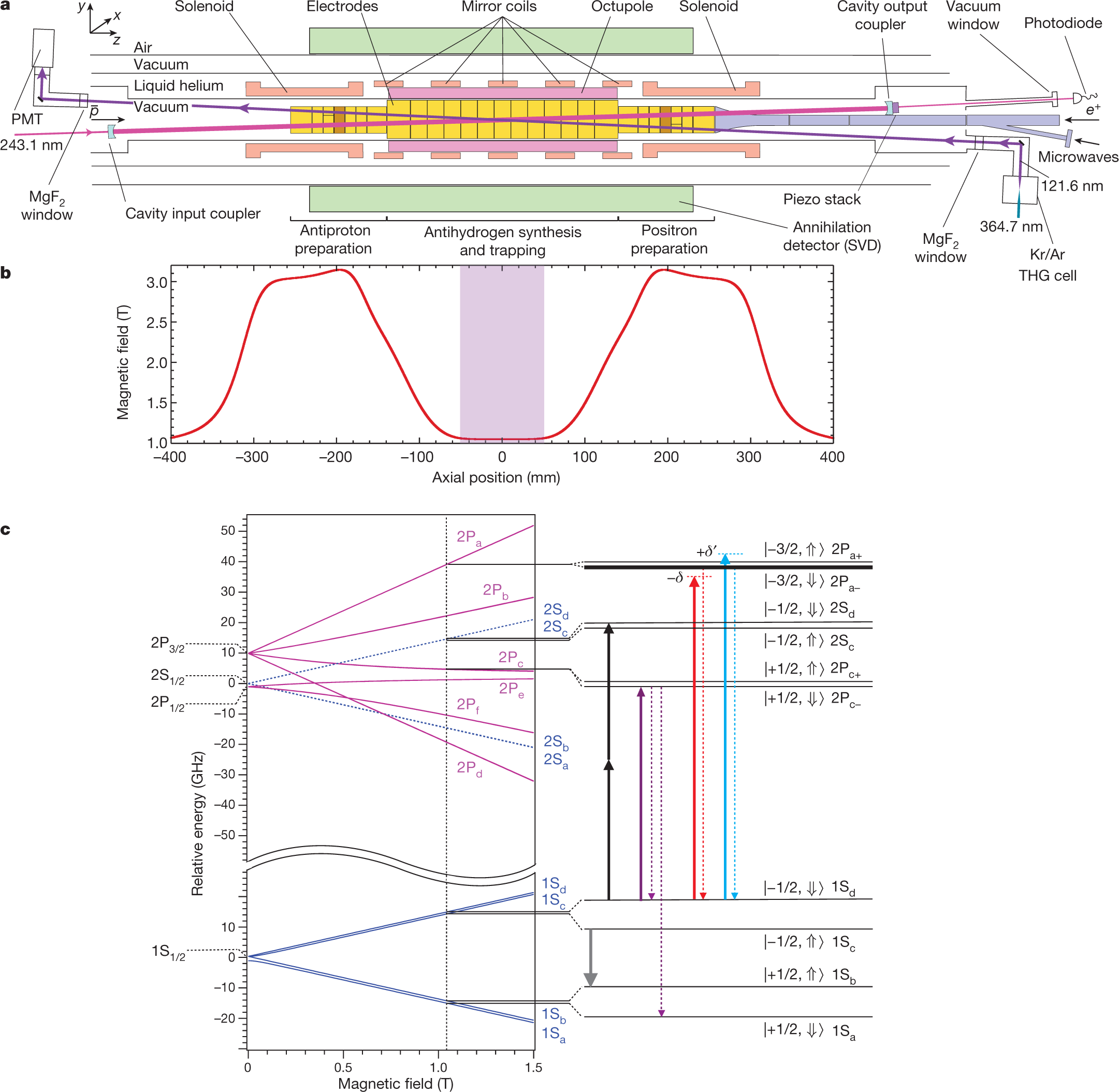Science
Related: About this forumLaser Cooling of Antihydrogen.
The paper to which I'll point in this post is this one: Laser cooling of antihydrogen atoms (Baker, C.J., Bertsche, W., Capra, A. et al. Laser cooling of antihydrogen atoms. Nature 592, 35–42 (2021))
Beyond an inordinate interest in neutrons, I'm not much for deeper particle physics. My kid won a medal in the 5th grade science project for a poster on the subject and some of the other parents of kids in the competition accused me of doing the project, but to be perfectly honest, I actually had no idea what he was talking about.
Nevertheless, chemists are aware that on a molecular level life is asymmetric, and one theory that's floated by my consciousness from time to time is the asymmetry of beta decay of neutrons (the Wu experiment) was involved in the mysterious origins of molecular asymmetry. As I understand it, this has been difficult to prove.
I am also vaguely aware that physicists have wondered why the universe seems to have excess matter, that is, why wasn't as much antimatter created as matter was created.
Antimatter can be prepared in the laboratory, and positrons are actually pretty easy to get: Proton bombardment of stable nuclei yields, upon proton capture, neutron poor atoms that decay by positron emission. When positrons interact with electrons, they are annihilated, releasing intense gamma radiation.
The paper cited at the outset is about isolated anti-hydrogen, a hydrogen atom with an anti-proton with a positron (an anti-electron) in its orbital; not only has it been synthesized, but it has been supercooled, which makes this a cool paper or perhaps an anti-cool paper.
Happily, it is open sourced, and anyone can read it by clicking on the link above.
Some excerpts:
Doppler cooling, the type of laser cooling used in this work, takes place via the velocity-dependent absorption of near-resonant photons by atoms. The atoms moving towards the photon source are selectively excited by setting the photon frequency slightly below the resonance for the atom at rest (red detuning), resulting in a net force opposing the motion2,3. The spontaneous emission of a photon from the excited atom occurs in a spatially symmetric manner in free space, resulting in a null average recoil force. In the case of (anti)hydrogen26, by exciting the 1S–2P Lyman-? transition, a net velocity change of 3.3 m s?1 can be exerted on average by each 121.6-nm photon scattered. In principle, repeating such scatterings only a few dozen times should slow (anti)hydrogen atoms, initially trapped in a well depth of about 50 ?eV (corresponding to a maximum speed of about 90 m s?1), down to submicroelectronvolt energies.
In practice, however, laser cooling of antihydrogen presents a number of technical challenges. First, generating and transporting radiation at 121.6 nm is difficult. There are no convenient lasers or nonlinear crystals at vacuum ultraviolet wavelengths, and the light is readily attenuated in air and in optical components...
A picture:
Fig. 1: The ALPHA-2 apparatus schematic and antihydrogen energy levels.

The caption:
Cool/Anti-cool.
Have a nice weekend, and if you are a Christian, happy Easter.
Atticus
(15,124 posts)better about the future. Thank you for that.
NNadir
(33,512 posts)...that the purpose of a good education is to teach someone how little he or she actually knows.
That certainly applies to me.
It has been my privilege and fortune to have good access to the world's scientific literature, which I use, and most of what I say here is mostly a function of that.
cstanleytech
(26,280 posts)AZ8theist
(5,452 posts)No mention of Jewish owners, no mention of space-based, and no mention of starting California wild fires.
Totally wrong.
![]()
I used to work as a Field engineer with lasers used in the semiconductor industry. This is high level science for sure.
Fascinating stuff.....
cstanleytech
(26,280 posts)To be honest from what I have read we will probably never see that happening as it seems to take a ton of energy to produce even a little bit of it so it does not seem viable to me but I was wondering what your take on the research into for that purpose.
NNadir
(33,512 posts)The energy produced is pure gamma radiation in any case, and very difficult to down convert into forms of energy useful to do thermodynamic work.
It is proving very difficult to get fusion energy to work, although I expect it will someday, should humanity survive, but I do understand, from attendance at many PPPL lectures, that even for fusion they are not remotely close to figuring out what to do with heat exchange.